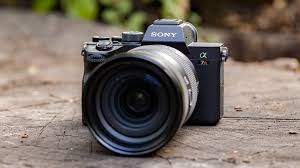social networks. It is there where an important part of the population – young and not so much – expresses their tastes, ideas, opinions or interests. Not only that, but we have learned to handle the image. Photography and video have become a form of everyday expression.
Even those who do not share regularly on social networks also participate in this visual culture, which has led to the massive explosion of video and photography. The main cause of this popularization is the smartphone. As mobile cameras improved, users sharpened their taste for visual creation.
To the point that a powerful camera has become an object of desire for young people, adults, photographers, non-professionals, amateurs of various degrees, content creators and streamers . A whole group of varied profiles.
José Antonio Consentino, an amateur photographer for more than 30 years, has been taking photos with his mobile for about ten years. He was among the first to join Instagram , a month after its launch, back in late 2010, and he uses his SLR camera less and less.
“The mobile goes more unnoticed”, stands out as one of its great advantages. ” Smartphones help you find that key point: the smile, the sadness, the serious gesture. They have made all of this much easier ”.
For Consentino, the improvement in the photographic quality of mobile phones is indisputable. “They are getting better at interpreting color in a sharp and realistic way.
There is less and less noise in the photo and we can control more the exposure time so that the photos turn out as we want, either with or without movement ”.
All this in a tool that fits in your pants pocket. The Samsung Galaxy are prepared with last generation cameras, capable of obtaining a high quality result. Not only at the photographic level but also video, so that they are positioned as an alternative to professional cameras for certain moments .
Powerful cameras like the ones on the Galaxy Note20 and Galaxy S20 are needed to get those professional-quality photos or spectacular video recordings . Both have a set of lenses designed to capture the maximum detail and adapt to any need of the creator.
A sample of how far these devices can go is the short film Heart Attack , by Korean Lee Chung Hyun, which he shot with a Galaxy S20 .
When it comes to taking pictures, the high-end models of the Galaxy series have a technology developed to obtain the maximum detail . One of its greatest assets is the set of lenses, which in the high-end models offer a wide angle and an ultra wide angle, a telephoto lens and an autofocus laser sensor.
Both wide angle and ultra wide angle are used to expand the field of view. The difference is that the focal length is shorter in the second. “All travel photography requires techniques that capture more landscape space,” says Philippe González, author of the book Instagram and all its secrets .
“But above all, the wide angle is useful in photographs where we want an entire building to appear or a group of people that are very close to you. In this aspect it has been very good for us ”.
González emphasizes that this lens is a weapon to get likes in the networks and gives the example of how to show the attractiveness of a beach. “Without a wide angle that allows you to show a boat up close, for example, and also what is behind it, such as palm trees or houses, the photo will not be so impressive.”
The telephoto lens is another of the elements that allow for better snapshots. “With the physical telephoto lens, a giant step has been taken. It helps us for that moment about which we usually say ‘I can’t show you everything that was seen,’ ”says Consentino.
It refers to landscapes where the distant elements are the ones that give true strength to the image. This lens is used to isolate elements or capture all the detail of an object. Sometimes it even serves to bring the sun or the moon closer, which without a TV appear tiny and lose prominence in the photograph. For more hints about landscape photography – iphotography.com.
Although a large part of the benefits that a smartphone offers when taking photos is the ease of the process. The laser autofocus sensor makes it even more automatic.
Allows the camera to focus on its own by sending and receiving a laser beam. This calculates the distance of objects and the focus needed to make the photo come out sharp.
“It brings photography closer to the masses,” says González. “Get us to have a high probability of taking a sharp photo in a minimum time.” Little preparation is needed.



 Bitcoin
Bitcoin  Ethereum
Ethereum  Tether
Tether  XRP
XRP  Solana
Solana  USDC
USDC  TRON
TRON  Cardano
Cardano  Lido Staked Ether
Lido Staked Ether  Avalanche
Avalanche  Toncoin
Toncoin